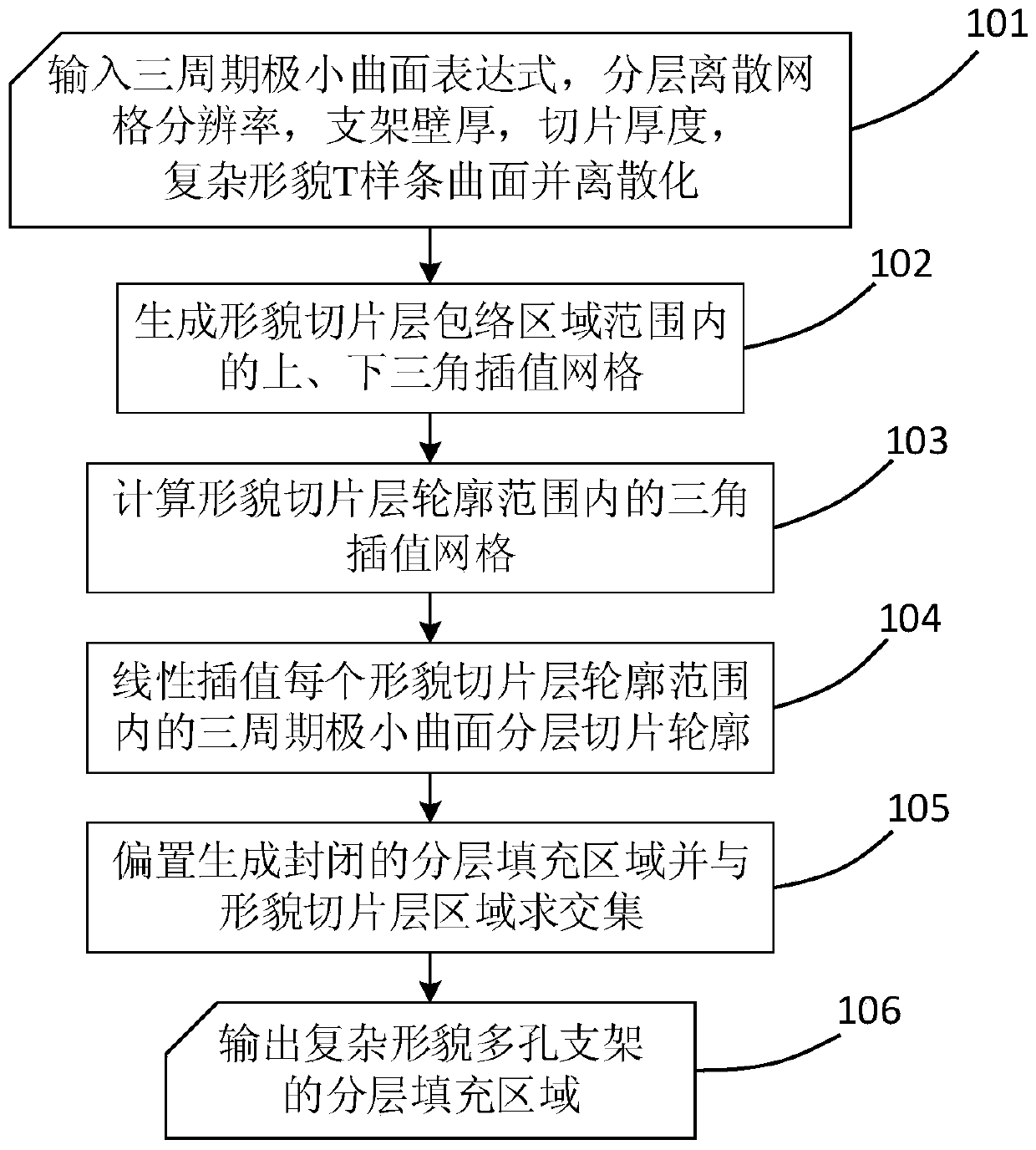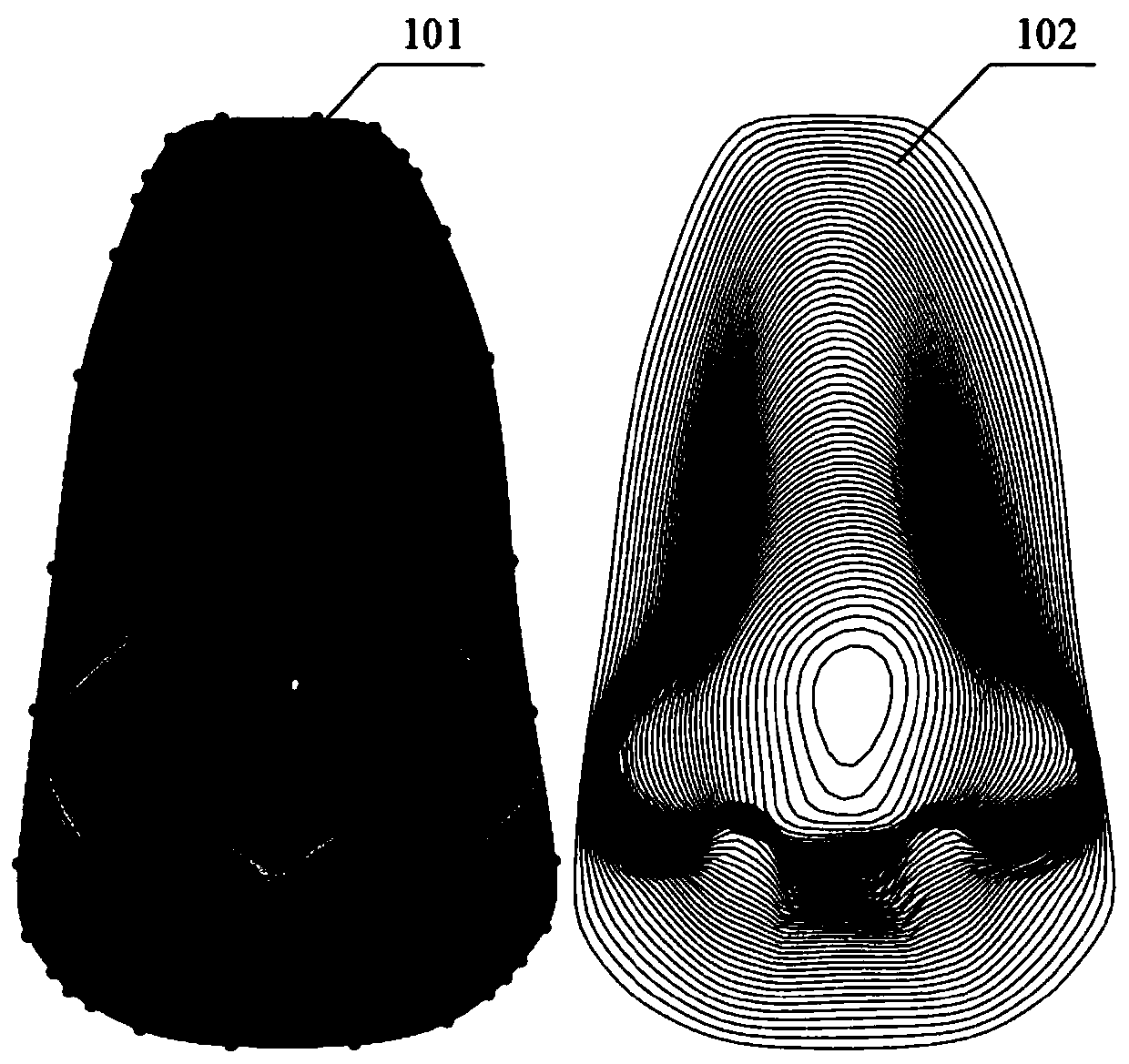Efficient generation method of porous scaffold with complex morphology
A porous support and topography technology, which is applied in special data processing applications, instruments, electrical digital data processing, etc., can solve problems such as low efficiency, and achieve the effects of improving efficiency, reducing time complexity, and making the method stable and reliable.
- Summary
- Abstract
- Description
- Claims
- Application Information
AI Technical Summary
Problems solved by technology
Method used
Image
Examples
Embodiment
[0046] Typical implementation examples of the present invention are as follows:
[0047] Input the G surface function expression f(x,y,z)=sin(τx)cos(τy)+sin(τz)cos(τx)+sin(τy)cos(τz)=0, the shape of the nose surface is determined by T Spline surface modeling, porous support wall thickness w=1mm, slice discrete thickness d=0.1mm, select one of the topographic slice layers, and calculate different numbers by setting different layered discrete grid resolution r or surface parameters Comparing the computational efficiency of different strategies. Such as Figure 7 As shown, when the period of the G curved surface is relatively large, the method of the present invention first obtains the triangular interpolation grid within the contour range of the topography slice layer and then interpolates, that is, the method of first interpolating and then interpolating, which is different from the traditional method that first interpolates and then interpolates There is little difference in...
PUM
 Login to View More
Login to View More Abstract
Description
Claims
Application Information
 Login to View More
Login to View More - R&D
- Intellectual Property
- Life Sciences
- Materials
- Tech Scout
- Unparalleled Data Quality
- Higher Quality Content
- 60% Fewer Hallucinations
Browse by: Latest US Patents, China's latest patents, Technical Efficacy Thesaurus, Application Domain, Technology Topic, Popular Technical Reports.
© 2025 PatSnap. All rights reserved.Legal|Privacy policy|Modern Slavery Act Transparency Statement|Sitemap|About US| Contact US: help@patsnap.com



